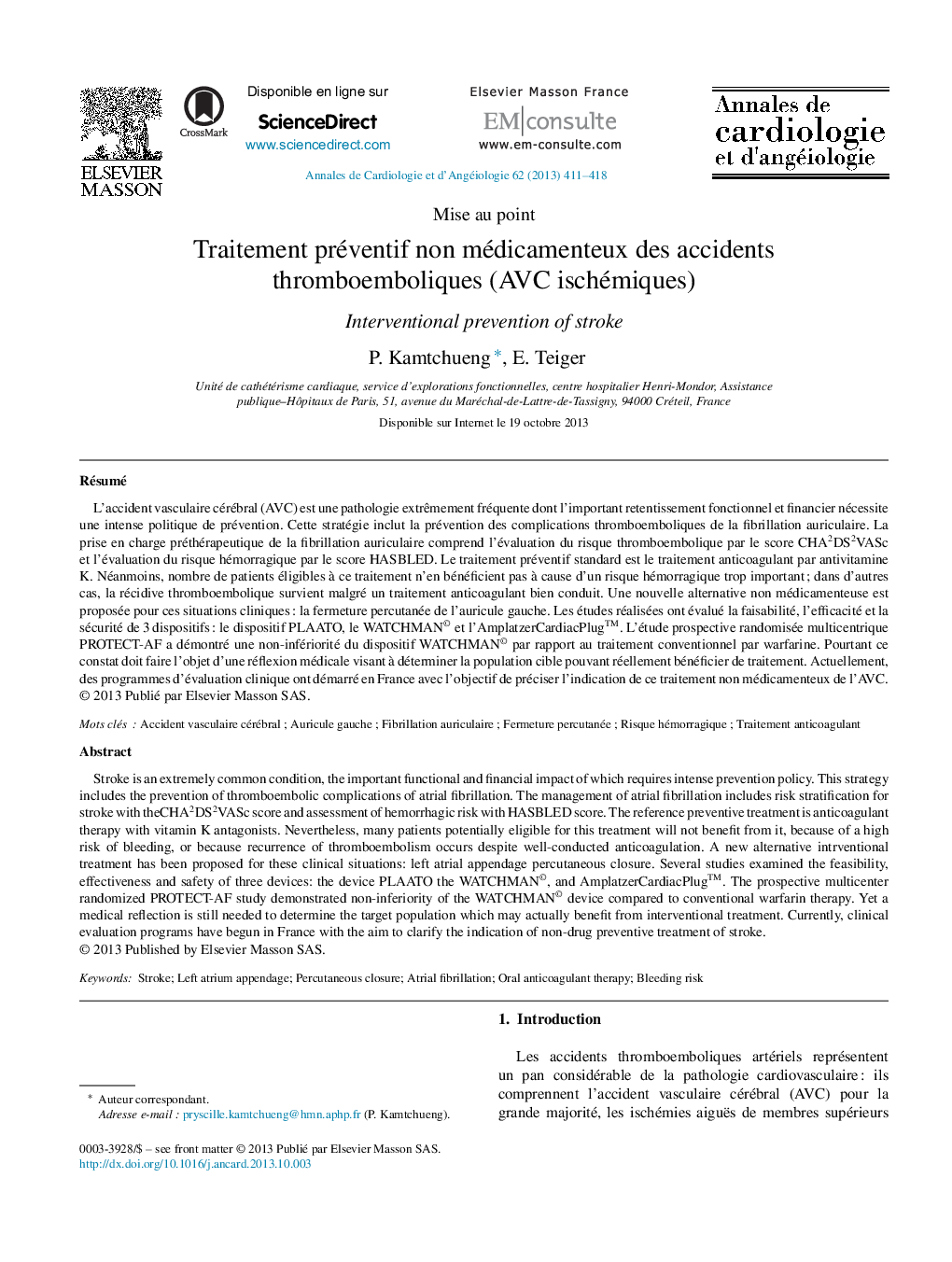| Article ID | Journal | Published Year | Pages | File Type |
|---|---|---|---|---|
| 2868978 | Annales de Cardiologie et d'Angéiologie | 2013 | 8 Pages |
RésuméL’accident vasculaire cérébral (AVC) est une pathologie extrêmement fréquente dont l’important retentissement fonctionnel et financier nécessite une intense politique de prévention. Cette stratégie inclut la prévention des complications thromboemboliques de la fibrillation auriculaire. La prise en charge préthérapeutique de la fibrillation auriculaire comprend l’évaluation du risque thromboembolique par le score CHA2DS2VASc et l’évaluation du risque hémorragique par le score HASBLED. Le traitement préventif standard est le traitement anticoagulant par antivitamine K. Néanmoins, nombre de patients éligibles à ce traitement n’en bénéficient pas à cause d’un risque hémorragique trop important ; dans d’autres cas, la récidive thromboembolique survient malgré un traitement anticoagulant bien conduit. Une nouvelle alternative non médicamenteuse est proposée pour ces situations cliniques : la fermeture percutanée de l’auricule gauche. Les études réalisées ont évalué la faisabilité, l’efficacité et la sécurité de 3 dispositifs : le dispositif PLAATO, le WATCHMAN© et l’AmplatzerCardiacPlug™. L’étude prospective randomisée multicentrique PROTECT-AF a démontré une non-infériorité du dispositif WATCHMAN© par rapport au traitement conventionnel par warfarine. Pourtant ce constat doit faire l’objet d’une réflexion médicale visant à déterminer la population cible pouvant réellement bénéficier de traitement. Actuellement, des programmes d’évaluation clinique ont démarré en France avec l’objectif de préciser l’indication de ce traitement non médicamenteux de l’AVC.
Stroke is an extremely common condition, the important functional and financial impact of which requires intense prevention policy. This strategy includes the prevention of thromboembolic complications of atrial fibrillation. The management of atrial fibrillation includes risk stratification for stroke with theCHA2DS2VASc score and assessment of hemorrhagic risk with HASBLED score. The reference preventive treatment is anticoagulant therapy with vitamin K antagonists. Nevertheless, many patients potentially eligible for this treatment will not benefit from it, because of a high risk of bleeding, or because recurrence of thromboembolism occurs despite well-conducted anticoagulation. A new alternative intrventional treatment has been proposed for these clinical situations: left atrial appendage percutaneous closure. Several studies examined the feasibility, effectiveness and safety of three devices: the device PLAATO the WATCHMAN©, and AmplatzerCardiacPlug™. The prospective multicenter randomized PROTECT-AF study demonstrated non-inferiority of the WATCHMAN© device compared to conventional warfarin therapy. Yet a medical reflection is still needed to determine the target population which may actually benefit from interventional treatment. Currently, clinical evaluation programs have begun in France with the aim to clarify the indication of non-drug preventive treatment of stroke.
